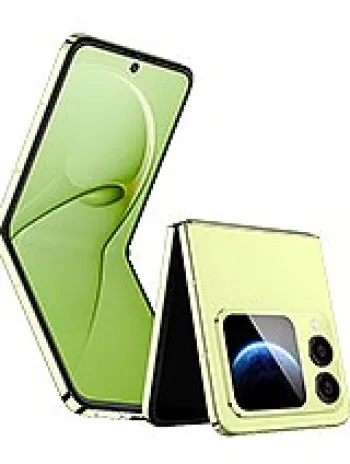
Overview of Huawei U7310
The Huawei U7310 was a feature phone released by Huawei during the second quarter of 2008. Known for its simplicity and essential features, it catered to users seeking reliable communication tools during an era when smartphones were not yet ubiquitous. Although the device has since been discontinued, it remains a point of technological interest for those examining the evolution of mobile technology.
Design and Build
The device measures 103 x 45 x 14.5 mm, allowing it to fit comfortably in the palm of a user's hand. Its compact design, combined with a weight that is not explicitly specified, made it an attractive option for those who prioritized portability in a mobile phone. The U7310 also supported a Mini-SIM, which was common for the time.
Display Characteristics
The phone featured a 2.4-inch TFT display with the capability of displaying 65K colors. This provided users with a decent visual experience for both messages and simple browsing. The screen resolution was set at 240 x 320 pixels, with an approximate density of 167 ppi, which was adequate for typical feature phone operations.
Network and Connectivity
Equipped with GSM and HSPA technology, the Huawei U7310 supported 2G bands at 850, 900, 1800, and 1900 frequencies, alongside 3G HSDPA at 2100 frequency. The device offered data speeds up to 3.6 Mbps (HSPA) and 0.384 Mbps in secondary modes, making it sufficient for basic online tasks at the time.
Camera Specifications
The main camera included a single 3.2 MP autofocus sensor, allowing users to capture simple photographs and videos. For video calling, the phone provided a VGA-quality front camera. This dual-camera setup was fairly innovative for feature phones of that period.
Memory and Storage
Internal storage was complemented by a dedicated microSD card slot, allowing users to expand storage for multimedia and other files. The phonebook capacity could hold up to 1000 entries, which was ideal for users with extensive contact lists. Additionally, the call record storage included details for the 20 most recently dialed, received, and missed calls.
Sound and Audio Features
Audio capabilities were limited but functional, featuring a loudspeaker for hands-free calls and media playback. However, it lacked a 3.5mm audio jack, suggesting the use of proprietary or Bluetooth-enabled headphones for personal listening experiences. Its Bluetooth version was 1.2 and supported A2DP profiles.
Communication Features
The Huawei U7310 supported SMS, MMS, and email messaging services, catering to various communication needs. Its WAP 2.0/xHTML browser also included RSS feed-reading capabilities, supporting elementary internet surfing despite hardware limitations.
Additional Features and Functionality
The device came with integrated FM radio, catering to users who enjoyed listening to live broadcasts. However, it lacked WLAN capabilities and positioning technology such as GPS, limiting its use case primarily to a communication-centric device. Java applications were also unsupported, which means it did not run common applets prevalent at the time.
Battery Life
A removable Li-Ion battery powered the Huawei U7310, providing reliable battery life consistent with feature phone standards. The option to swap batteries was a common, user-friendly feature, allowing users to keep spare batteries for extended use without needing to recharge immediately.
Concluding Remarks
The Huawei U7310 represents an era of mobile technology characterized by essential communication features and minimalistic design. Though limited by today’s smartphone standards, it was a functional device catering to users in the late 2000s. This phone holds nostalgic value for those who experienced its use, highlighting the rapid progression from basic mobile phones to today's feature-rich smartphones.
Key Features of Huawei U7310
- Supports GSM and HSPA network technologies.
- Compact dimensions: 103 x 45 x 14.5 mm.
- Mini-SIM compatibility.
- 2.4-inch TFT display with 65K colors.
- Expandable storage via microSD card slot.
- 3.2 MP main camera with autofocus and video capability.
- Front VGA camera for video calls.
- FM radio support.
- Bluetooth 1.2 with A2DP support for wireless audio.
- USB 2.0 connectivity.
- Supports SMS, MMS, and Email messaging.
- WAP 2.0/xHTML, RSS capable browser.
- Removable Li-Ion battery for easy replacement.
Disadvantages of Huawei U7310
- Discontinued model, support and parts may be difficult to find.
- Lacks 4G and 5G network support, limited to 3G speeds.
- No Wi-Fi connectivity.
- Bluetooth version 1.2 is outdated with limited functionality.
- No GPS positioning feature.
- No 3.5mm audio jack for headphones.
- Java is not supported, limiting the ability to run certain applications.
- Screen-to-body ratio is relatively low (~38.5%).

View Also
More Phones
All Rights Reserved +14268 Phones © Mobilawy 2025

























